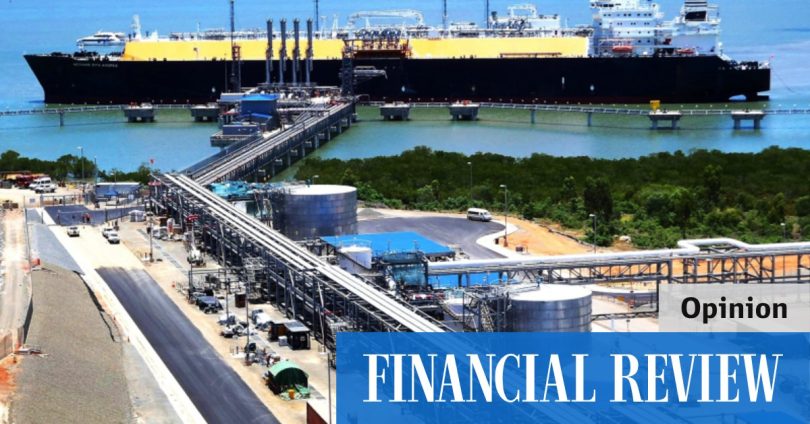[ad_1]
The Narrabri Gas Project, 100 per cent of which is committed to the domestic gas market, is now desperately needed.
Between 2009 and 2012, we invested about $300 billion in seven new LNG projects – investments that have seen production grow by nearly 170 per cent in the decade to 2021. Tens of thousands of jobs have been created and our investment in LNG has underpinned Australia’s domestic gas supply security as well. Without that LNG investment, most of Australia’s gas resources would have never been developed because Australia’s domestic market is simply not big enough to have underpinned the scale of investment required to bring those resources to market.
Since 2012, however, there have been only two new LNG projects announced – Santos’ Barossa gas project off the Northern Territory which will backfill Darwin LNG, and Woodside’s Scarborough gas project off Western Australia which will underpin Pluto Train 2 and backfill Pluto Train 1.
Considering China, Korea, Taiwan, Indonesia, Malaysia, the Philippines, Thailand, Vietnam, Bangladesh and India will all consume more LNG in 2050 than they did in 2020, there is a massive opportunity for Australia to continue to supply LNG to Asia for the next 30 years or more.
We’re also turning our LNG experience to a cleaner energy future that includes carbon capture and storage (CCS), hydrogen production, energy efficiency and integration with renewable energy. We’re not just targeting net zero by 2050, we’re already building the projects to do it.
Last year, McKinsey produced a report on the decarbonisation options for our industry. It found that the oil and gas industry has a competitive advantage in delivering wind, solar, CCS and, most obviously, hydrogen. The factors that give us that advantage are similar to those that led to the LNG industry: geology and growing demand.
Demand for decarbonisation
Moreover, the lessons of the past 40 years have given us unparalleled operational familiarity, access to infrastructure, supply chain relationships and project expertise.
And decarbonisation is in demand right now. At the World Gas Conference, the discussions are not about how the industry could decarbonise. They’re about what we’re already doing.
Australia’s LNG has the potential to lower emissions in LNG-importing countries by about 166 million tonnes of carbon dioxide each year, by replacing higher-emissions fuels. To put this in perspective, that is equivalent to more than one-third of Australia’s total annual greenhouse gas emissions.
We’re already building renewable energy projects all over the country, as well as ensuring there’s dispatchable power for the electricity grid when the wind doesn’t blow and the sun doesn’t shine.
Our sector is one of the biggest investors in new fuels and emissions reduction technology. In the past few years, we’ve announced more than $6 billion in these projects, from CCS, to hydrogen, to energy efficiency.
Australia can be at the forefront of a new technological wave, a world leader in emissions reduction.
Oblivious to the reality of global energy markets where LNG demand in our region will double by 2050, our opponents are still pursuing a complete phase-out of fossil fuels, which is simply unachievable. Minority calls to end oil and gas projects are calls to return to coal and wood burning in Asia, to make integration of renewables into the grid more expensive and to halt billions of committed funding in cleaner energy.
They also ignore other very real priorities for the Australian people: cost of living, national security and our ability to make things – the essential products that underpin modern life such as fertilisers, packaging, medical equipment and the polymers that still provide 60 per cent of the world’s clothing fibres.
Moratoriums and project bans from the mid-2000s are coming home to roost – as are the effects of market intervention.
This week we have seen the price shocks that happen when investment in supply fails to match demand. Until the end of April domestic gas customers on the east coast were paying about one-third of the LNG netback price, but outages in coal-fired power stations in May have ratcheted up demand in a tight supply situation, and that has flowed on to higher gas and electricity prices.
Ironically, a retailer of last resort event in NSW this week has pushed the gas market there into administration, sending a market that had been effectively matching supply with demand right until the day of intervention, into turmoil.
This is a state that imports more than 95 per cent of its gas from other states and has refused to support investment in new gas supply for most of the past decade.
The Narrabri gas project, 100 per cent of which is committed to the domestic gas market, is now desperately needed.
In other jurisdictions such as Victoria, policy uncertainty is risking investment and supply – right as we need it. The many fingers of regulation – and those willing to use it as a commercial or philosophical tool – could cost us all dearly.
Although domestic prices are still relatively low compared with those paid internationally, we simply must ensure new supply comes online to underpin ongoing energy security, maximise our international advantage and meet domestic needs.
Now is the time for us to work together to ensure that gas reaches our customers and that regulation facilitates, rather than stifles, a functioning market.
We also need to harness the opportunity of lower emissions and seize our competitive advantage, recognising the critical role of gas and cleaner energy projects such as CCS and hydrogen.
Many WGC delegates in Daegu, some no doubt wondering where they will get reliable and affordable gas in the future, would envy Australia’s position at this critical juncture in history.
They don’t have the competitive advantage we have in energy resources and carbon storage – an opportunity we can’t squander.
[ad_2]
Source link








